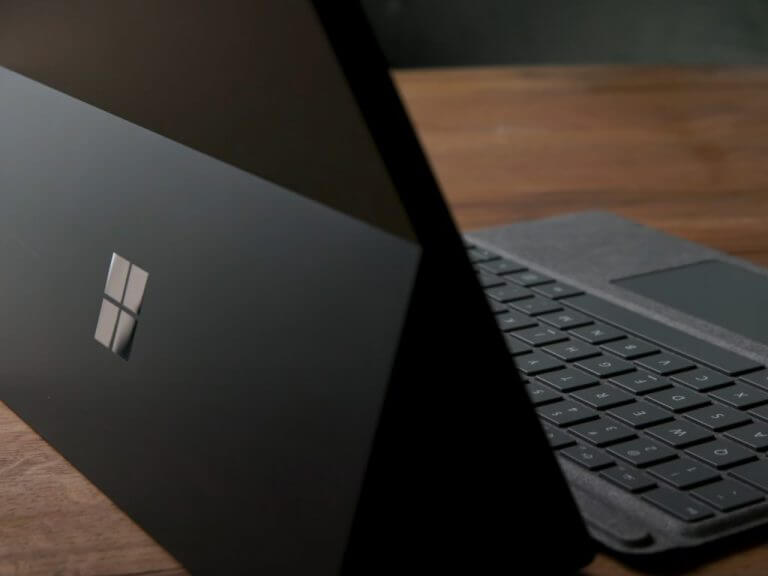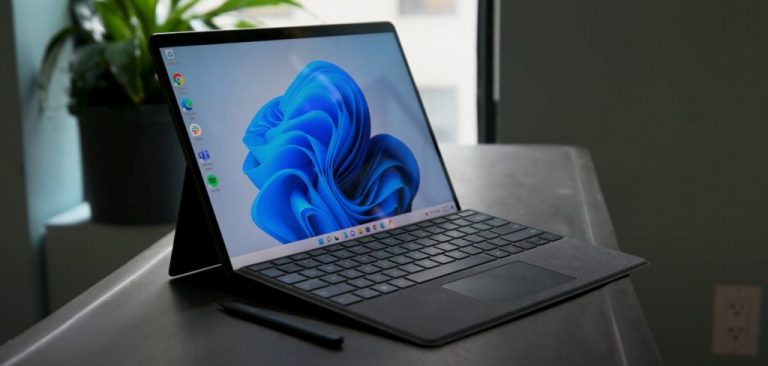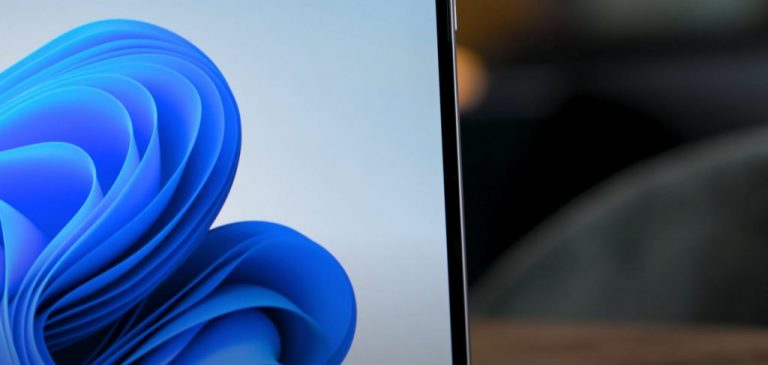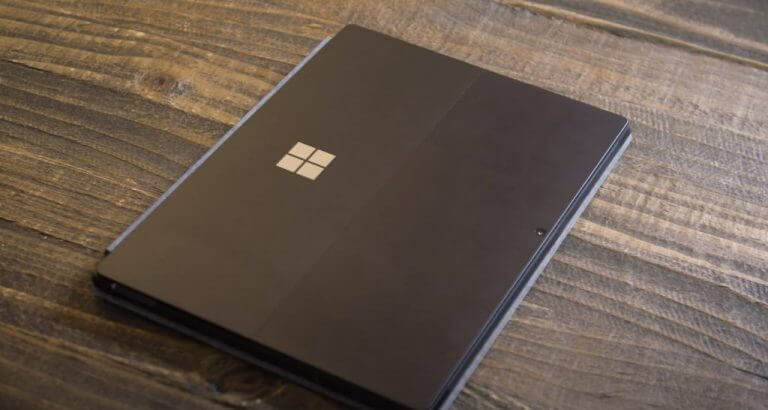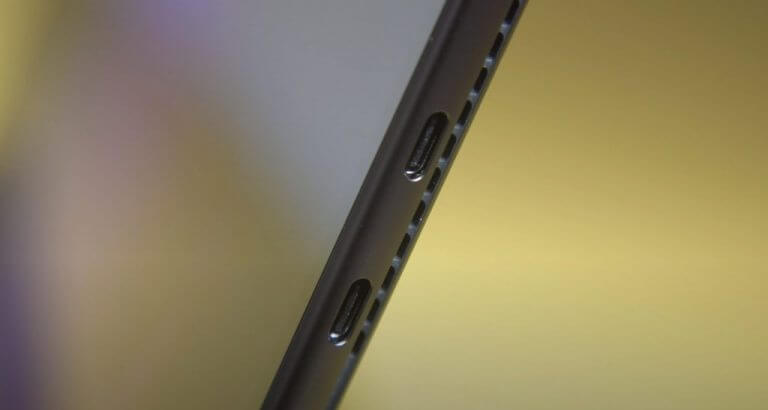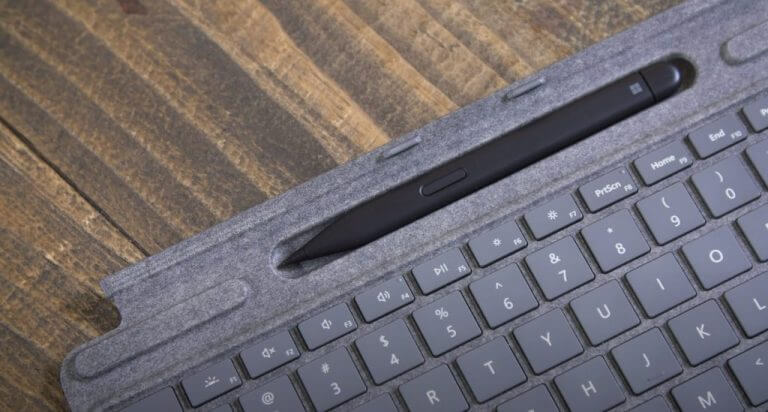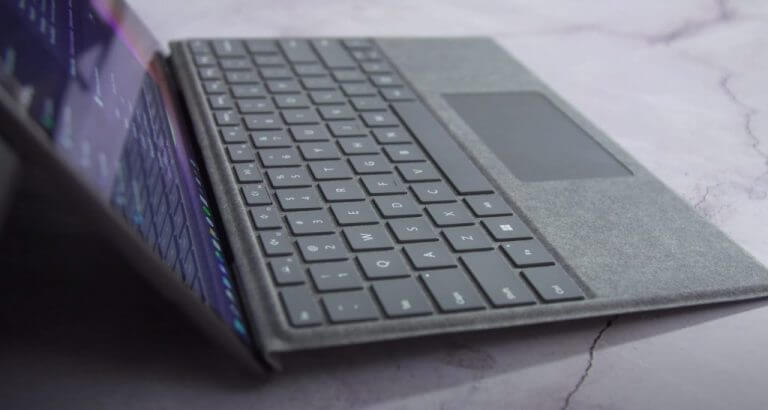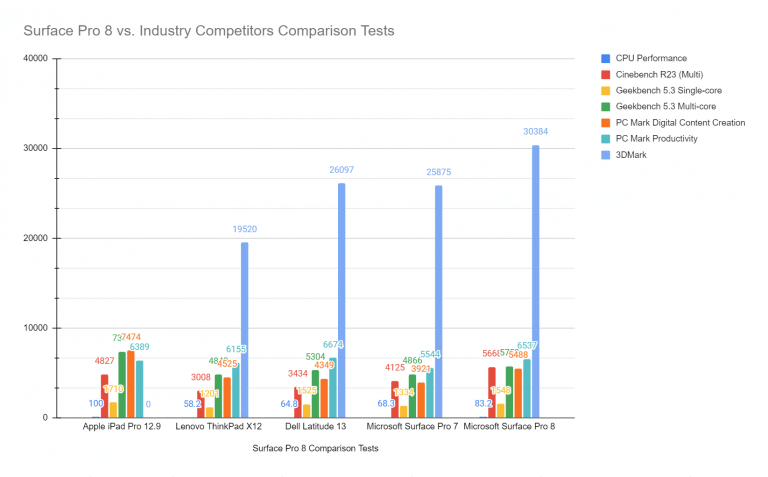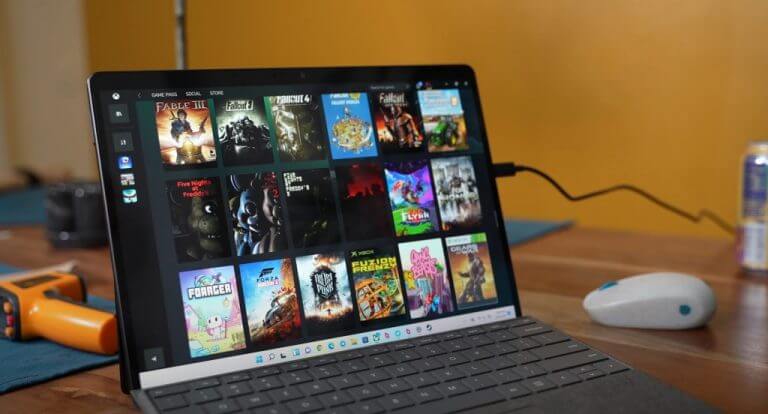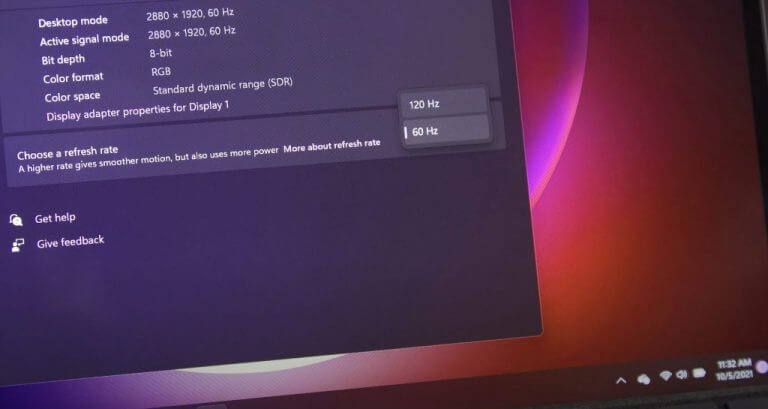Starting at $1,009.99/ on sale at $899.99
Microsoft’s Surface Pro 8 has been on the market for a few months now and the overwhelming conversation surrounding the product has been about the price increase, and that’s perhaps the best outcome for the company after 8 generations.
Instead of Microsoft being derided for a misstep in hardware execution or software implementation, fans, users and critics are stuck complaining about the only other perceived shortcomings of the company’s eighth attempt at defining the detachable market, the price.
This is not to say, the complaints about the price don’t warrant a discussion, as it is Microsoft’s 8th generation product and economies of scale should be factoring in at some point, but the company presumably sunk some R&D into new hardware features it is looking to recoup.
In a year where the Surface Pro 8 comes with a multitude of hardware refinements such as a larger 13-inch screen, 120Hz refresh rate panel, beefier processors, Thunderbolt 4 ports, 10MP 4K rear-facing camera, support for Wi-Fi 6 bandwidths, larger battery and larger SSDs, there have been little to no complaints about flawed implementations.
Sometimes, what comes off as a no-brainer for hardware upgrades can quickly become the very pain points of a product launch. For instance, in an attempt to introduce a new 120Hz refresh rate panel, manufacturers could open themselves up to dead pixels, hyper touch sensitivity, color calibration, ghosting or tearing issues.
Instead, Microsoft’s Surface Pro 8 has one of the nicest panels on a detachable 2-in-1 to date, and checks off a short-list of hardware features longed for by users of previous generations or long-time holdouts waiting to make the leap.
| Surface Pro 8 | |
| Processor | Quad-core 11th Gen Intel® Core™ i5-1135G7 Processor Quad-core 11th Gen Intel® Core™ i7-1185G7 Processor i5 and i7 options with storage 256GB and above built on the Intel® Evo™ platform |
| Graphics | Intel® Iris® Xe Graphics (i5, i7) |
| Storage | Removable solid-state drive (SSD) options: 128GB or 256GB 512GB or 1TB |
| Display | Screen: 13” PixelSense™ Flow Display Resolution: 2880 x 1920 (267 PPI) Up to 120Hz refresh rate (60Hz default) Aspect ratio: 3:2 Touch: 10-point multi-touch GPU Ink Acceleration Dolby Vision® support3 |
| Storage | Removable solid-state drive (SSD) options: 128GB or 256GB 512GB or 1TB |
| Camera Video Audio |
Windows Hello face authentication camera (front-facing) 5.0MP front-facing camera with 1080p full HD video 10.0MP rear-facing autofocus camera with 1080p HD and 4k video Dual far-field Studio Mics 2W stereo speakers with Dolby Atmos® |
| Memory | 8GB, 16GB, 32GB (LPDDR4x RAM) |
| Dimensions | 11.3 in x 8.2 in x 0.37 in (287mm x 208mm x 9.3mm) |
| Wireless | Wi-Fi 6: 802.11ax compatible Bluetooth Wireless 5.1 technology |
| Battery | Up to 16 hours of typical device usage |
| Color | Colors: Platinum, Matte Black (only available on select configurations) |
| Ports/Slots | 2 x USB-C® with USB 4.0/Thunderbolt™ 4 3.5mm headphone jack 1 x Surface Connect port Surface Type Cover port Compatible with Surface Dial off-screen interaction* |
|
What’s in the box
|
Surface Pro 8
Power Supply Quick Start Guide Safety and warranty documents |
Look and Feel
I was given a Surface Pro 8 configured with an Intel Evo Core i7 processor, 16GB RAM and 1TB SSD, which is one of the high end devices, coming in at $2,199 retail price. The base line model comes configured with an Intel Core i5 with 8GB RAM and 128GB SSD and starts at $1,009.99 but on sale for $899.99 right now.
As I mentioned, for $899.99 users will get one of two color options for this year’s Pro 8 that include the traditional Magnesium Grey or Graphite Black. The Graphite Black Surface Pro 8 is reminiscent of the Surface Pro X but surprisingly lighter than the X but heavier than the 7 and 7 Plus. The new Surface Pro 8 weighs in at 891 g (=31.43oz / 1.96 pounds) vs the Surface Pro X at 1.048 kg (=36.97 oz/ 2.31 pounds) and the Surface Pro 7+ at 790 g (=27.87 oz/ 1.74 pounds).
Moving away from its odd weight, the Surface Pro 8 finally addresses the bezel issue. Perhaps, since the refinement of the Surface Pro 4, there has been a rather large contingent of Pro users who have begged the company to shrink the bezels around the display.
For years, Microsoft had stuck to its useability argument to justify the aging bezel design, deferring to tablet use losing functional prowess with accidental touches when held in hand, despite others perfecting palm rejection technology along the way. Not until the Surface Pro X did Microsoft finally capitulate to the reduced bezel movement, and even then, the company managed to squeeze out the Surface Pro 7 and Pro 7 Plus still adhering to its long-in-the-tooth bezel design.
With the Pro 8, 2 of the 4 bezels have been trimmed and give way to a beautiful 13-inch PixelSense Flow touch display that can crank up its refresh rate to 120Hz and soon ratchet it down to 60Hz automatically with new variable refresh rate technology coming to Windows 11, on supported hardware.
As a detachable, there are really only two main hardware points to emphasize, the screen (main computing area) and the keyboard, and Microsoft has evolved the Surface Pro 8’s screen nicely. The Surface Pro 8 has a much more rounded profile than the Surface Pro 7 and Pro 7 Plus (think iPhone 4 to iPhone 6-type of evolution). The completely flat panel of the Pro 7 is punctuated with an equally angular edge while the Pro 8 bleeds off its edge into a seamless rounded aesthetic.
Interestingly enough, with such a deep rounded aesthetic, the fan vent becomes more pronounced with the Surface Pro 8 than it did with previous generations, mainly because it remains just as flat as before.
The colors on the Surface Pro 8 screen are flat and accurate for professional editing purposes but aren’t as punchy as other comparative OLED panels from companies such as Lenovo, Samsung or even Asus. Blacks look a bit “drier” than on OLED panels but the resolution of 2880 x 1920 (267PPI) is still crisp and with a 3:2 aspect ratio, the Pro 8’s panel is dream for content creation.
Microsoft also piled some more tech into the screen that includes GPU Ink Acceleration, Dolby Vision Support, and reduced flickering and response times. On the whole, the screen has been greatly improved.
Moving around to the outside of the display, Microsoft replaced its USB-A port in a favor of an additional USB-C with Thunderbolt 4 support. Adding another Thunderbolt port allows the Surface Pro 8 to be used as 4K workstation for some users as it can now power dual 4K supported monitors for traveling content creators.
Aside from the addition of the port and the rounded profiles, much of the Surface Pro 8 remains similar, if not identical to the Surface Pro 7. There is now access to the SSD panel to expand storage, but that was also present with the commercial release of the Surface Pro 7 Plus.
The Surface TypeCover Keyboard has also been updated with a new carbon-fiber chassis, making it bit more rigid and offering less flex in the middle as older versions had. The stiffness of the new TypeCover isn’t the only change to come, Microsoft has also refined its Pogo-pin arrangement that will now only work on newer Surface Pro’s going forward.
Instead of the four metal bumps normally found in the connection port, there are two elongated prongs that now connected to the bottom of the Surface Pro 8’s screen.
Presumably, this new design has to do with the built-in charging area for the new Surface Slim Pen. The new Surface Pro 8 TypeCover design has been tested out and carried over from the Surface Pro X which also has a similarly embedded Surface Slim Pen charging cradle.
Pressure sensitivity and key travel feel about the same as other TypeCovers and the trackpad feels largely untouched. The trackpad still feels a bit cramped on the keyboard as it has before, but because of the new rigid chassis, presses on the touch points sound louder. There is a more audible clicking confirmation when using the trackpad on the Surface Pro 8, and for anyone using the device in a library they might have to be content with simply deferring to the touchscreen or else risk getting kicked out for a noise complaint.
Lastly, there is the Surface Slim Pen 2, which feel a lot like the original but the elongated tip feels more pen-like and the new haptics engine in the hardware adds a nice experience. I’m not an artist and I’d suspect most artists would gloss over the new haptics engine in the Slim Pen 2. While the haptics offer an additional level of nicety, it’s not a fundamental game changer and is hardly felt unless cranked all the way up via the Settings menu.
Performance
Enough about the jewel-like quality of the Surface Pro 8. How does it perform compared to both previous generations and current market options?
Well, very well.
While the Surface Pro 8’s more commercial rival, the Apple iPad Pro still outperforms the Surface Pro 8 on native tasks, the Pro 8 reaches better power-per-wattage peaks than any other current Intel or even AMD detachable while also rivaling other thin and “powerful” laptops.
The Core i7-1185G7 can clock up to 4.8 GHz and level off at 35W at the start of high intensity tasks and idle at 28W for the remainder of the time which helps in keeping fan noise to a minimum and heat reasonable.
Paired with an updated Toshiba M.2-2230 PCIe-SSD configuration, launching apps from both zero-start and from memory was quick and responsive. The Iris Xe G7 96EUs dual channel RAM graphics made navigating Adobe’s suite of apps buttery smooth as well as other third party graphically intense applications such as Affinity Photos, Da Vinci Resolve, OBS, Autodesk, CATIA, and Sketchbook.
Perhaps, most impressive is the sustained performance when the device is unplugged. It’s an understated development with Surface devices this year that the company has optimize it’s Intel offerings to perform impressively both on battery and when plugged in.
Normally, Windows devices get a boost and full capacity performance only when plugged in, but the Surface Pro 8’s GPU performance is maintained consistently on and off battery thanks to optimized profiles for workloads on a maximum core clock of 1350 MHz and Quick Sync.
Still not a native gaming rig, the Surface Pro 8 does perform better than traditional Surface Pros with moderate settings for most games. Gamers can expect up 50-55FPS for first person shooters, and 96 FPS for some open world games such as GTA V. At highest resolution settings, most of the gaming numbers get cut in half and performance can get really jittery really quickly.
Speaking of gaming, fan noise is still a concern for the Surface Pro 8 despite its efficiencies with newer processors and GPUs. Installations and updates to apps can trigger the fans and under heavy workloads in Autodesk, Da Vinci Resolve and Premier, I managed to get the device whirling at around 40 db(A) which is about the same level as the Pro 7 Plus.
However, the noise level was still lower than other competitors such as the Dell Lattitude 13 and the ThinkPadX12.
With a 51.5 Wh battery as compared to the 48.9 Wh one on the Surface Pro7, the Surface Pro 8 can eek out about 6 hours of battery life on moderate workloads. The more intense the workload the less battery life the Surface Pro 8 can muster and I’ve managed to push it to about 4 hours under heavy use.
I would imagine due to the new screen tech in the Surface Pro 8 and the slightly larger profile that battery consumption is up. There is also an idling problem in Windows 11 that will hopefully be addressed in future iterations of the OS, that would benefit the Surface Pro 8.
Some say that turning off the 120Hz refresh panel can help extended the battery life by upwards of an hour and a half, I have yet to see any anecdotal evidence for myself. Sure, the 120Hz sounds like a nice checklist item but in day to day use it’s hardly noticed or missed, but its presence hasn’t negatively affected my usage yet, so I’ve opted to keep it in place for now.
To toggle between 60Hz and 120, users will need to type Refresh Rate in the Settings search menu, as it’s a buried featured for now. Microsoft has said it will enable variable refresh rate which also help with battery life in the near future.
Summary
The Surface Pro 8 now offers support for Thunderbolt 4, better GPU performance, a faster but hungrier Core i7 chip and big bright 13-inch screen.
There are some downsides to the upgrade but not enough to not recommend the Pro 8 to anyone with older Pro models, moving away from the iPad Pro or pricing out the competition from Dell and Lenovo at the moment with the Latitude 13, 7320 and ThinkPad X12 here in the states.
The Surface Pro 8 can run heavier, louder and hotter than some older models, but it also out performs most detachable in the market while also doubling as a dedicate workstation and ultra-portable do-everything device.

